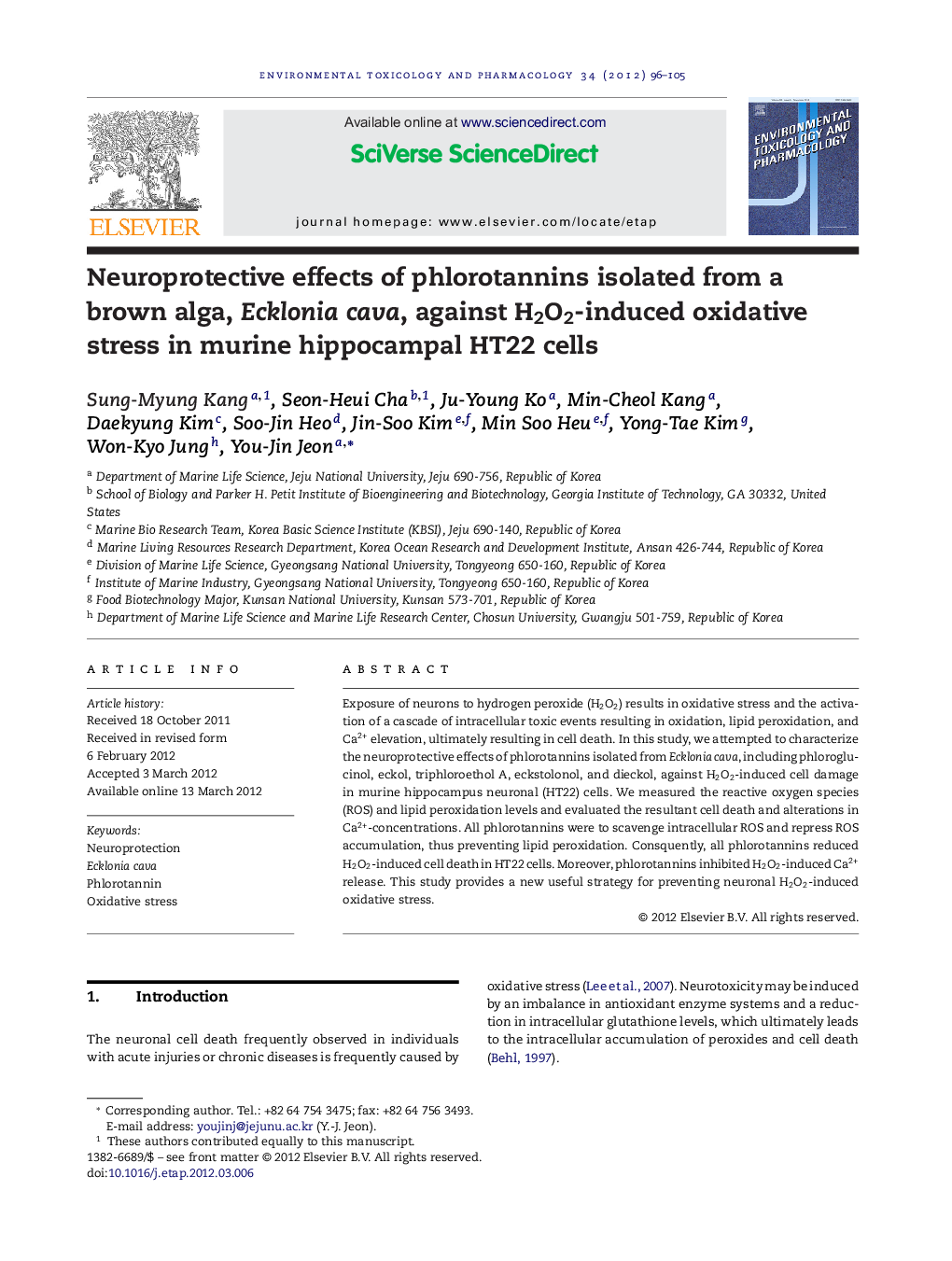| Article ID | Journal | Published Year | Pages | File Type |
|---|---|---|---|---|
| 2583586 | Environmental Toxicology and Pharmacology | 2012 | 10 Pages |
Exposure of neurons to hydrogen peroxide (H2O2) results in oxidative stress and the activation of a cascade of intracellular toxic events resulting in oxidation, lipid peroxidation, and Ca2+ elevation, ultimately resulting in cell death. In this study, we attempted to characterize the neuroprotective effects of phlorotannins isolated from Ecklonia cava, including phloroglucinol, eckol, triphloroethol A, eckstolonol, and dieckol, against H2O2-induced cell damage in murine hippocampus neuronal (HT22) cells. We measured the reactive oxygen species (ROS) and lipid peroxidation levels and evaluated the resultant cell death and alterations in Ca2+-concentrations. All phlorotannins were to scavenge intracellular ROS and repress ROS accumulation, thus preventing lipid peroxidation. Consquently, all phlorotannins reduced H2O2-induced cell death in HT22 cells. Moreover, phlorotannins inhibited H2O2-induced Ca2+ release. This study provides a new useful strategy for preventing neuronal H2O2-induced oxidative stress.
► The neuroprotective efficacies of phlorotannins against cell damage in HT22 cells. ► All phlorotannins were shown to scavenge intracellular ROS. ► All phlorotannins reduce ROS generation and H2O2-induced cell death in HT22 cells. ► Phlorotannins inhibited the elevation of H2O2-induced Ca2+ release. ► This study provides new useful strategy for protecting against neuronal cell damage.
